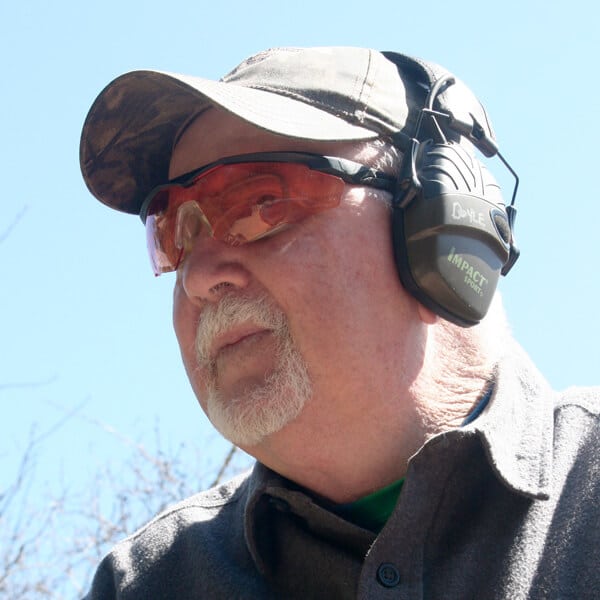Why You Cant Carry
November 11th, 2022
5 minute read
For those new to the concealed carry game, selecting a proper holster can be a confusing process. Should I go with Kydex or leather? Does an inside or outside the waistband holster best suit my needs? Perhaps a shoulder rig might be the best way to go?
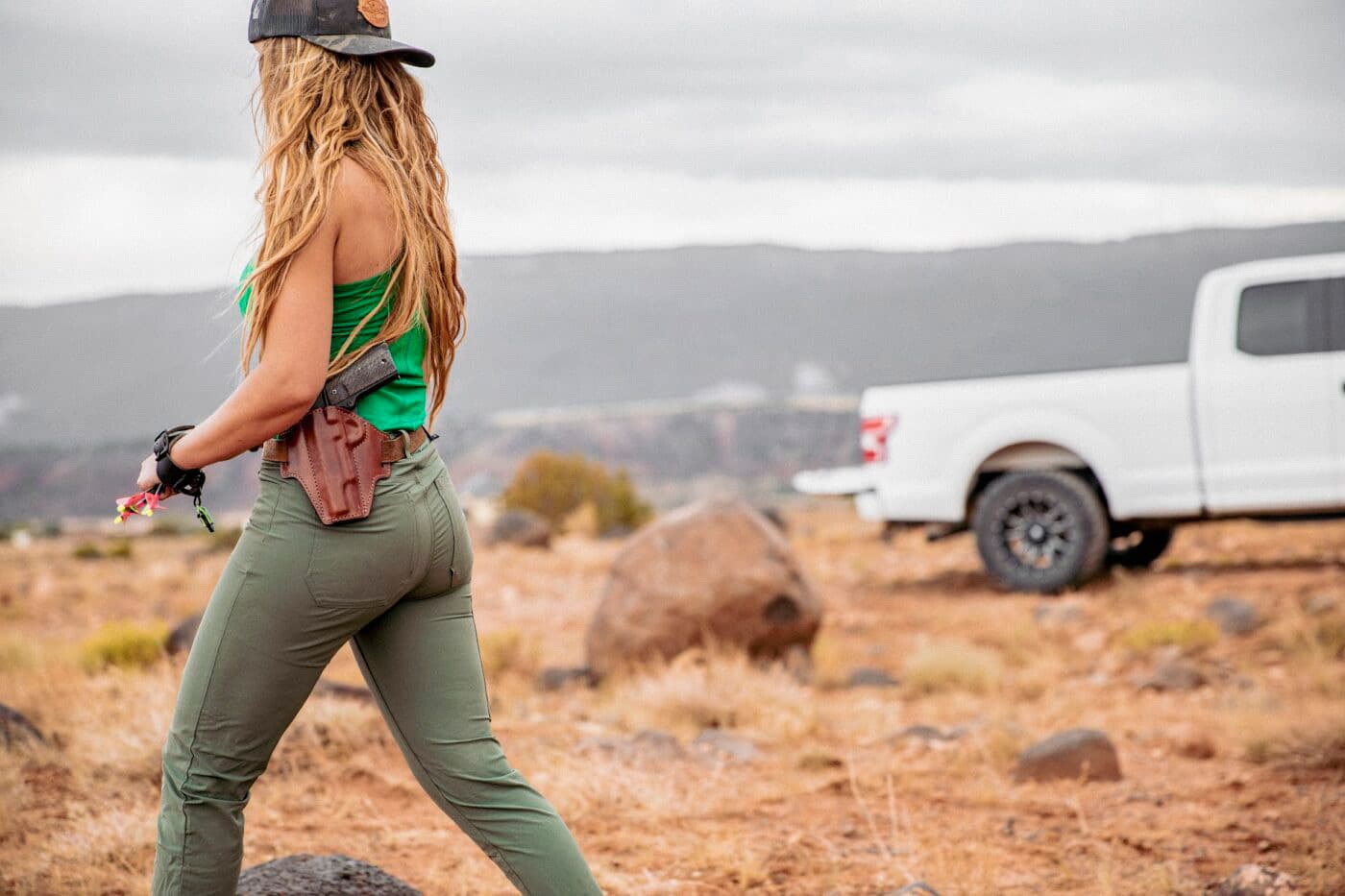
Consider that many folks ruminate over the smallest detail when selecting the optimum handgun, but don’t give nearly as much thought to the holster. Very often, the first off-the-rack scabbard that suits their budget will be their choice and as a result, performance suffers.
Why Holster Cant Matters
One of the first points to ponder when considering a holster for concealed carry is that there is a big difference between true concealment holsters and other designs worn for sport and competition. For example, quality inside-the-waistband (IWB) holsters from reputable manufacturers do a pretty good job of hiding the gun. Outside-the waistband (OWB) holsters can be a mixed bag, although many designs will make the cut. Holsters that work for a plainclothes law enforcement officer wearing a windbreaker with police stenciled on the back, just might be a poor choice for the armed citizen. On the other hand, some OWB pancake rigs would be a very good option.
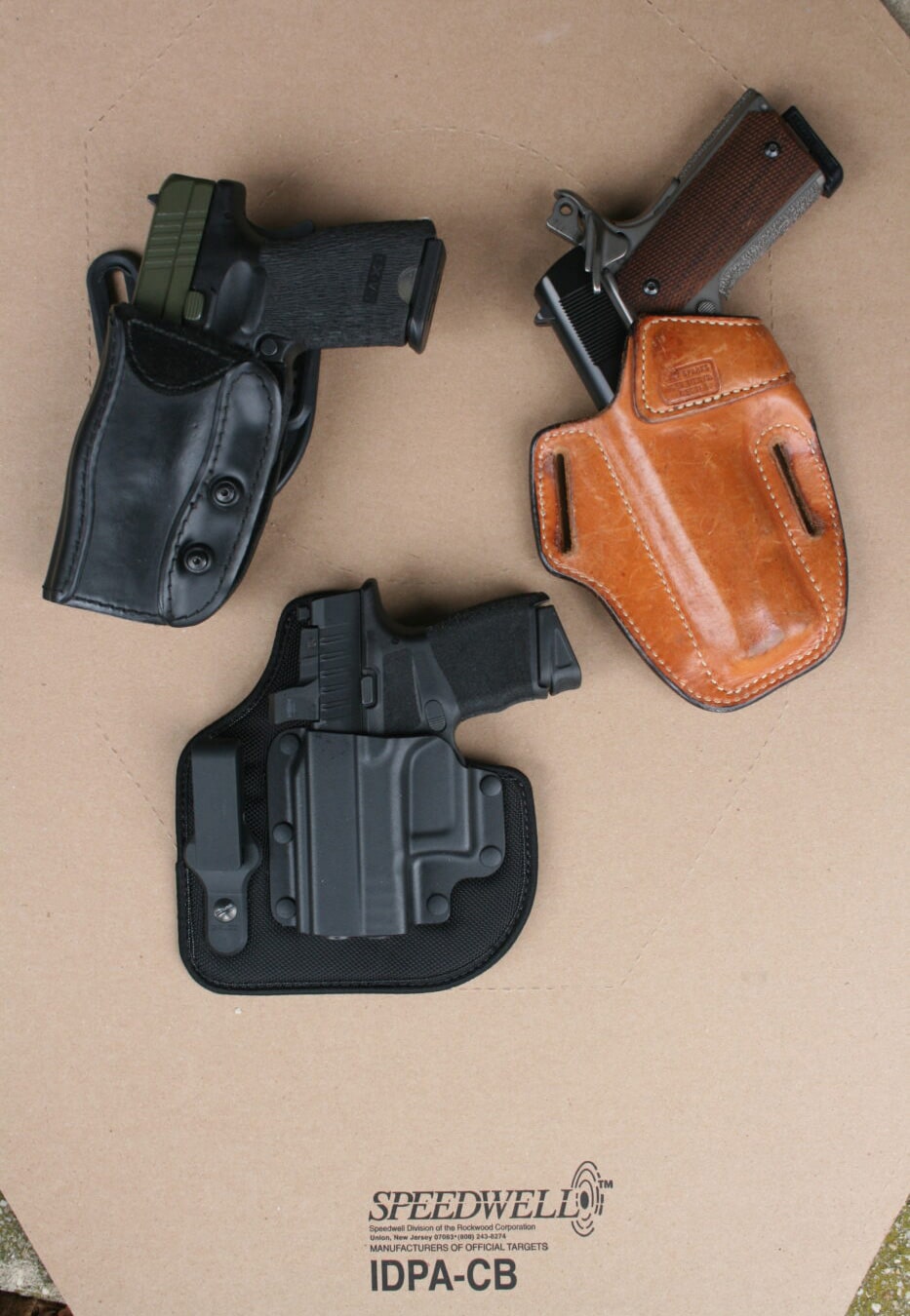
One overlooked quality in holster design is cant, sometimes called rake. Cant refers to the angle of the holstered handgun when worn on the belt. By a wide margin, most OWB holsters are crafted with an “FBI cant”, where the butt of the pistol is angled forward and the muzzle to the rear. A neutral cant positions the pistol straight up and down on the belt with no angle at all. A forward rake holster has the butt of the pistol to the rear with the muzzle angled forward.
FBI cant holsters remain very popular for a number of reasons. Over 80 years ago, FBI agent Hank Sloan designed a butt-forward plainclothes holster for the Bucheimer leather company that secured a revolver without the need for a retention strap. While this is not the first design with a butt-forward rake, it became very popular with both the agents of the Bureau as well as other plainclothes law enforcement officers of the day.
I have a modern rendition of this design and, while it remains a personal favorite, there are better choices today for discreet carry. It may have worked with the baggier suits of the day then, but it would give you up in a New York minute when worn under more contemporary attire.
A New Day?
Roy Baker advanced the craft many years ago with his line pancake holsters. As the name implies, pancake holsters are flat and hold the gun tight to the body. This style of holster is now turned out by just every manufacturer and just about all feature a FBI, butt-forward cant. Concealment qualities can be very good when worn with a proper belt and light covering garment.
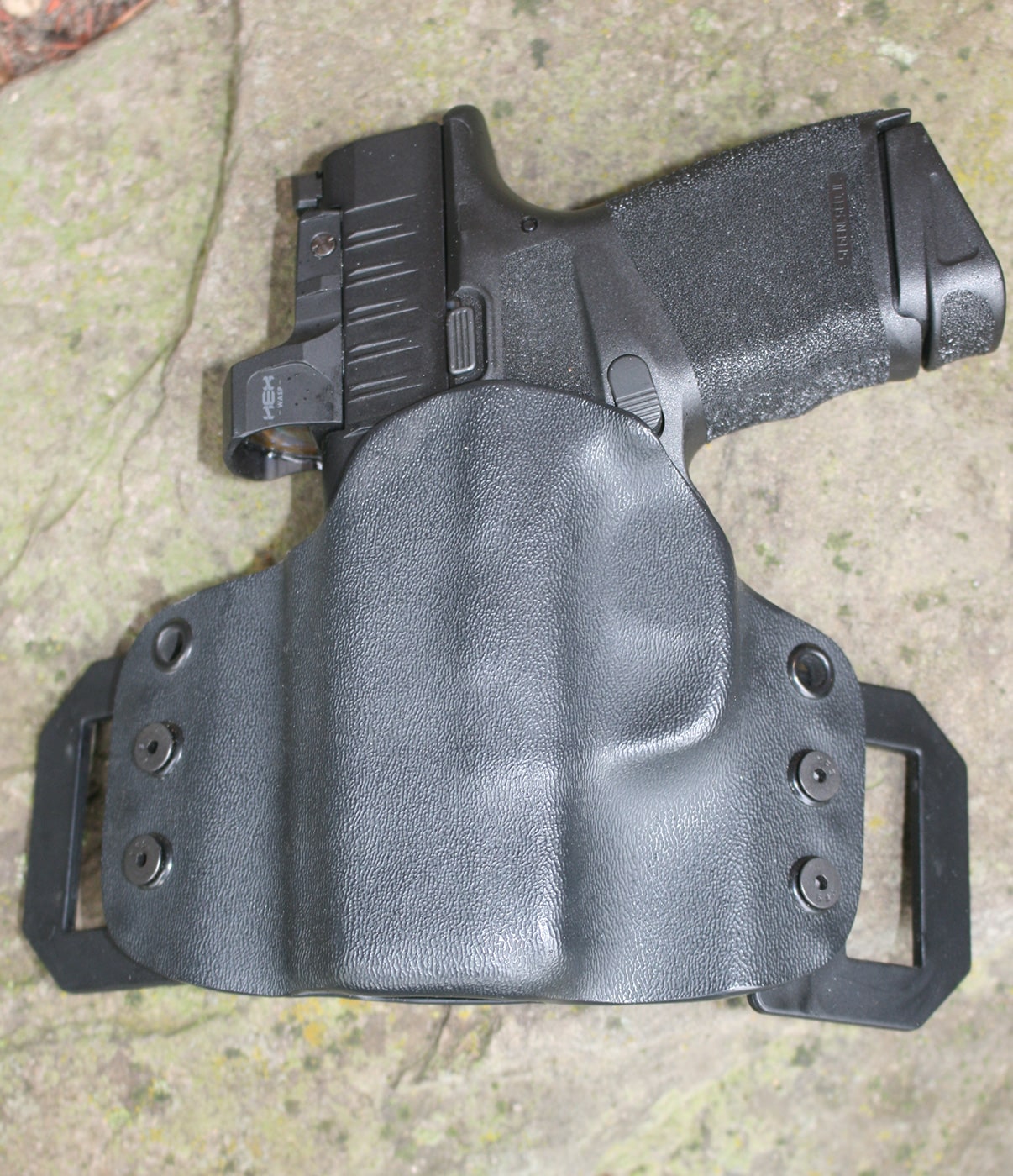
So what’s not to like? Many shooters find that draw efficiency with this style of holster to be less than optimum. This is especially true of female users. Because the butt is forward, the shooter has to bend the wrist down which often causes them to flare the elbow to the outside. For women, the holster rides higher on the torso and this can be a train wreck, depending on body type.
However, FBI rake designs offer the best concealment qualities for an OWB holster, so it’s a tradeoff between draw efficiency and concealment. Just about all IWB holsters designed to be worn in the traditional behind-the-hip position feature an FBI cant.
Splitting the Tilt Difference
Neutral cant holsters are also commonly encountered and again, can effectively hide a handgun as long as you pay attention to the cover garment and use a good belt. Of late, I have been testing the waters with appendix-inside-the-waistband (AIWB) holsters which typically utilize a neutral rake.
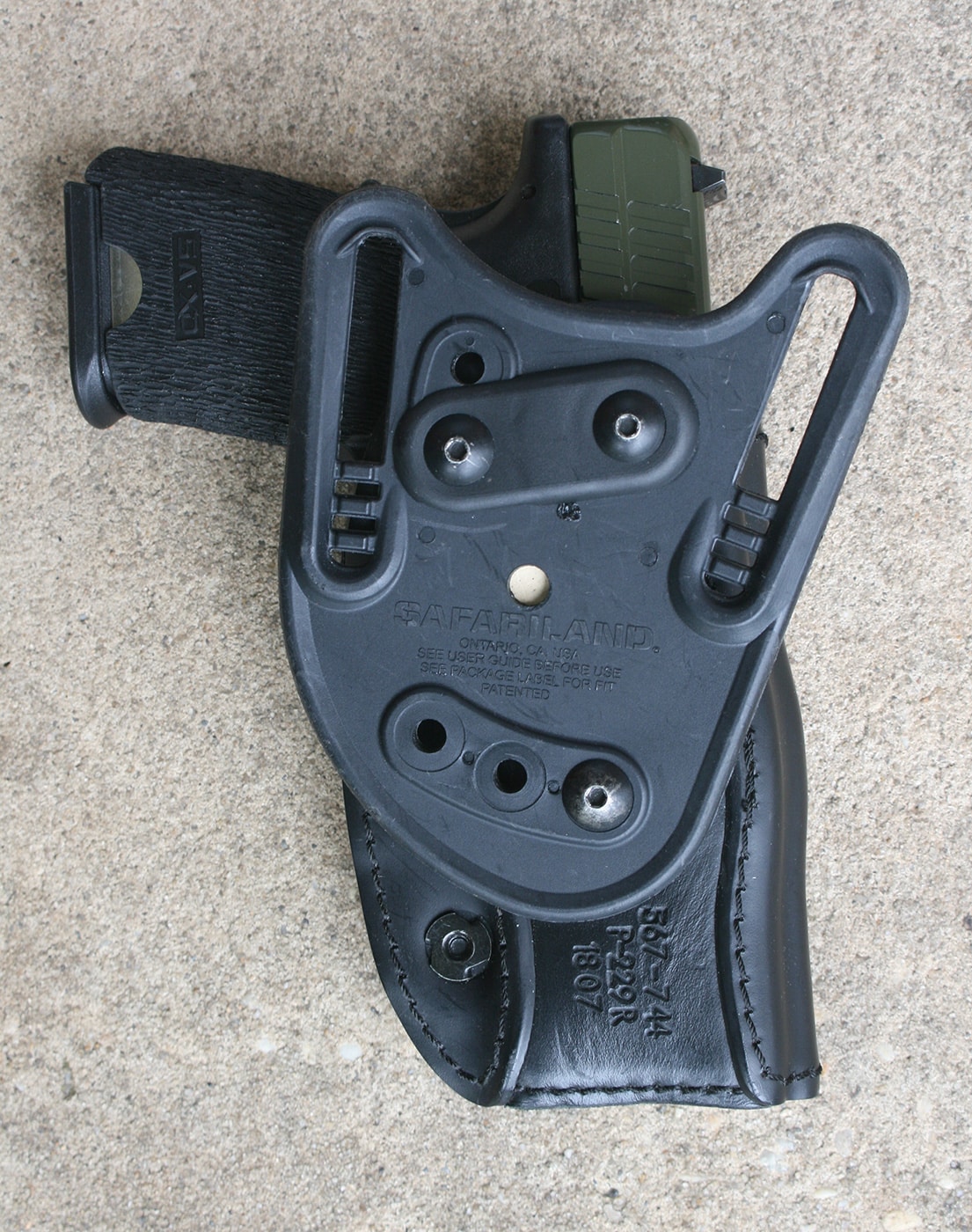
Personally, I find neutral cant holsters easier to draw from as the wrist is relatively straight during the process. Typically, that jacket or shirt that helps hide the gun has to be a tad longer than with an FBI cant holster that rides higher on the belt. Most of my preferred carry rigs use neutral cant, but the fact of the matter is that I no longer have to wear a jacket and tie and my everyday attire casual attire gives me a lot more latitude.
Moving Ahead
Last up for consideration are forward cant holsters. In my hand, I find them the quickest to draw from although concealment can be a little more problematic. I found them especially useful when carrying small pistols and snub revolvers although I have carried service-size guns in such a rig.
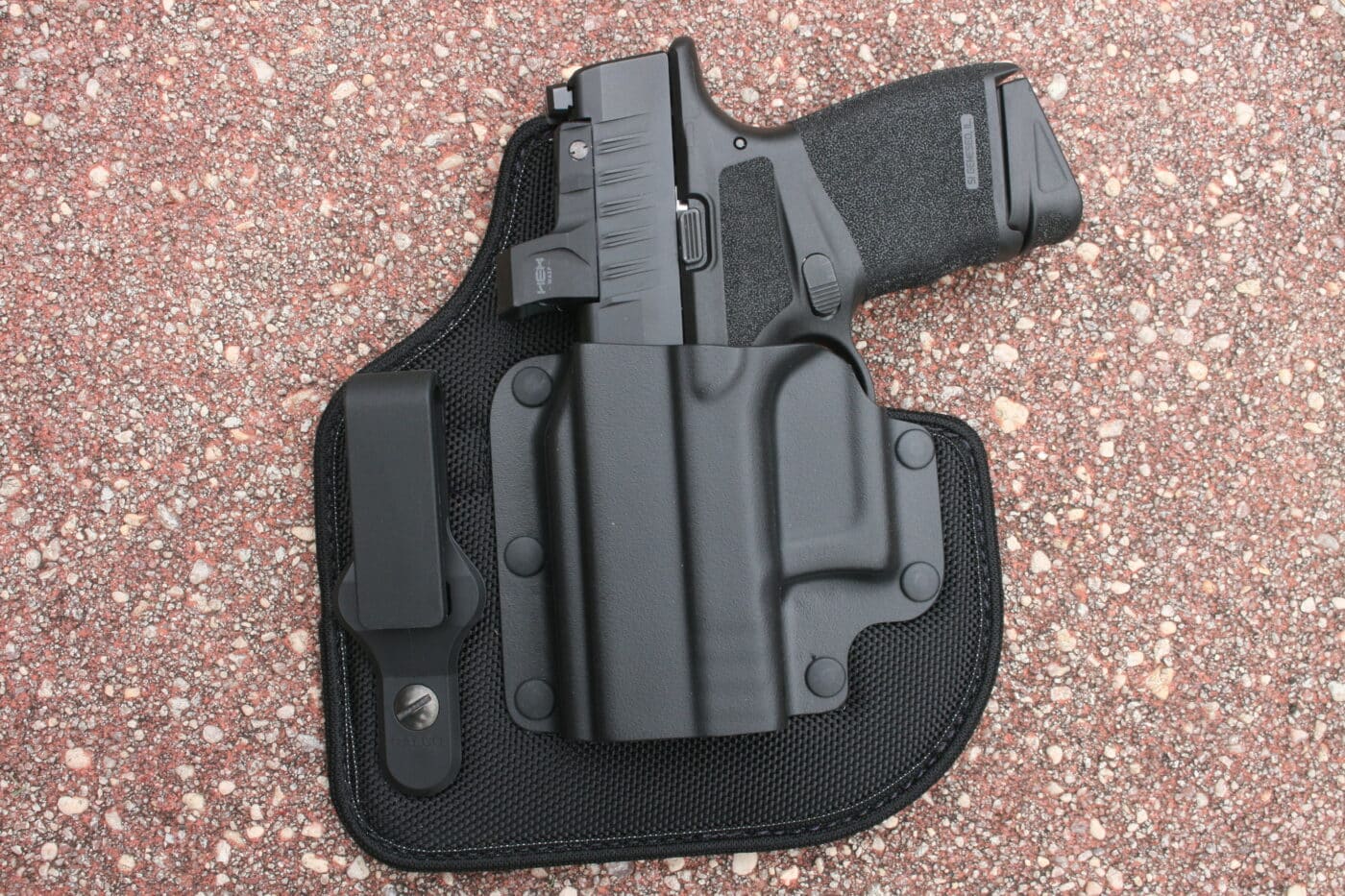
As an added bonus, some forward rake designs can also be worn as a crossdraw holster. Crossdraw holsters are useful for individuals who spend a good part of their day in a seated position, as long as you don’t make the mistake of wearing it all the way around on your support side hip. With rare exceptions, if you fancy a forward rake holster, you need to look at the smaller, custom manufacturers as off-the-rack designs can be hard to come by.
Conclusion
Holster selection need not be that difficult. Consider the size of your pistol, clothing you will likely wear with it, and the sort of environments and social settings you will find yourself in. Whatever you come up with it, your holster has to be comfortable, retain the gun and allow you to draw and get into action relatively quickly. Over time, I have found that I need more than one holster for my various carry guns depending on time of the year and what I expect to be doing. With a little bit of forethought, you too can arrive at the correct decision to suit your needs.
Editor’s Note: Please be sure to check out The Armory Life Forum, where you can comment about our daily articles, as well as just talk guns and gear. Click the “Go To Forum Thread” link below to jump in!
Join the Discussion
Continue Reading
Did you enjoy this article?

 565
565





